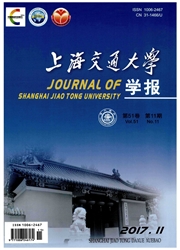

 中文摘要:
中文摘要:
在电控共轨高速柴油机试验台上,对比研究了分别以纯柴油和聚甲氧基二甲醚(PODE)/柴油(φPODE=20%)为燃料时,喷射压力、预喷相位和主喷相位等喷油参数对发动机燃烧及其颗粒物排放特性的影响.结果表明:当喷射压力增大时,预喷燃料放热相位提前,预喷燃烧放热率幅值降低,主喷放热相位提前,最高爆压升高,积聚模态颗粒物排放显著降低,柴油发动机在小负荷下的核模态颗粒物排放大幅升高;当预喷相位提前时,预喷放热相位略微提前且峰值下降,引起小负荷工况下的主喷放热相位延迟,燃烧放热率峰值显著增大,缸压降低,增加了柴油发动机的核模态颗粒物排放而降低了积聚模态颗粒物的排放,且受发动机负荷影响明显;当主喷相位提前时,缸压峰值增大、放热相位提前,使得低负荷下的颗粒物排放升高,高负荷下的颗粒物排放降低;掺混PODE燃料后,柴油发动机的核模态颗粒物排放增大的趋势得到有效抑制.
 英文摘要:
英文摘要:
Abstract: The research tested the effect of fuel supply parameters on combustion and particle emission characteristics on a diesel engine fueled with neat diesel and blends of polyoxymethylene dimethyl ethers (PODE)/diesel (φPODE=20%). The results showed that the increase of common rail pressure could cause advanced main fuel heat release, higher peak in-cylinder pressure and higher mean gas temperature; the in- creased common rail pressure would decrease accumulation mode particle (AMP) emission, but would in- crease nucleation mode particle (NMP) emission under light-duty mode. The advanced pilot injection tim- ing would lower the pilot fuel heat release, and improve the main injection heat release under low load; the advanced pilot injection timing would effectively reduce the AMP number concentration, but cause obvious NMP number increase. The advanced main injection timing directly shifted the main fuel heat release rateand caused an advanced, increased pressure peak; earlier main injection timing would cause lower AMP number concentration and higher NMP emission under low-duty mode, and obtained opposite results under high-duty mode. The introduction of PODE could amplify the positive effect of fuel supply parameters on particle emissions and suppress the NMP emission to a certain extent.
 同期刊论文项目
同期刊论文项目
 同项目期刊论文
同项目期刊论文
 期刊信息
期刊信息
